Inspect the wheel for worn wheel stud holes. Worn stud
holes will appear as a shiny worn surface on the wheel face. If the stud holes
are oval and if metal is built up around the holes, replace the wheels.
Inspect the wheel for cracks radiating from the following areas:
Cracks are a result of overloading. Replace damaged wheels and inspect
the wheel studs. If you discover that one or more studs is bad, replace all
of the wheel studs. The hub assembly may have a worn mounting face. Inspect
the wheel ball seats for wear. Replace all damaged parts. The two illustrations
that follow show worn stud holes and cracked discs.
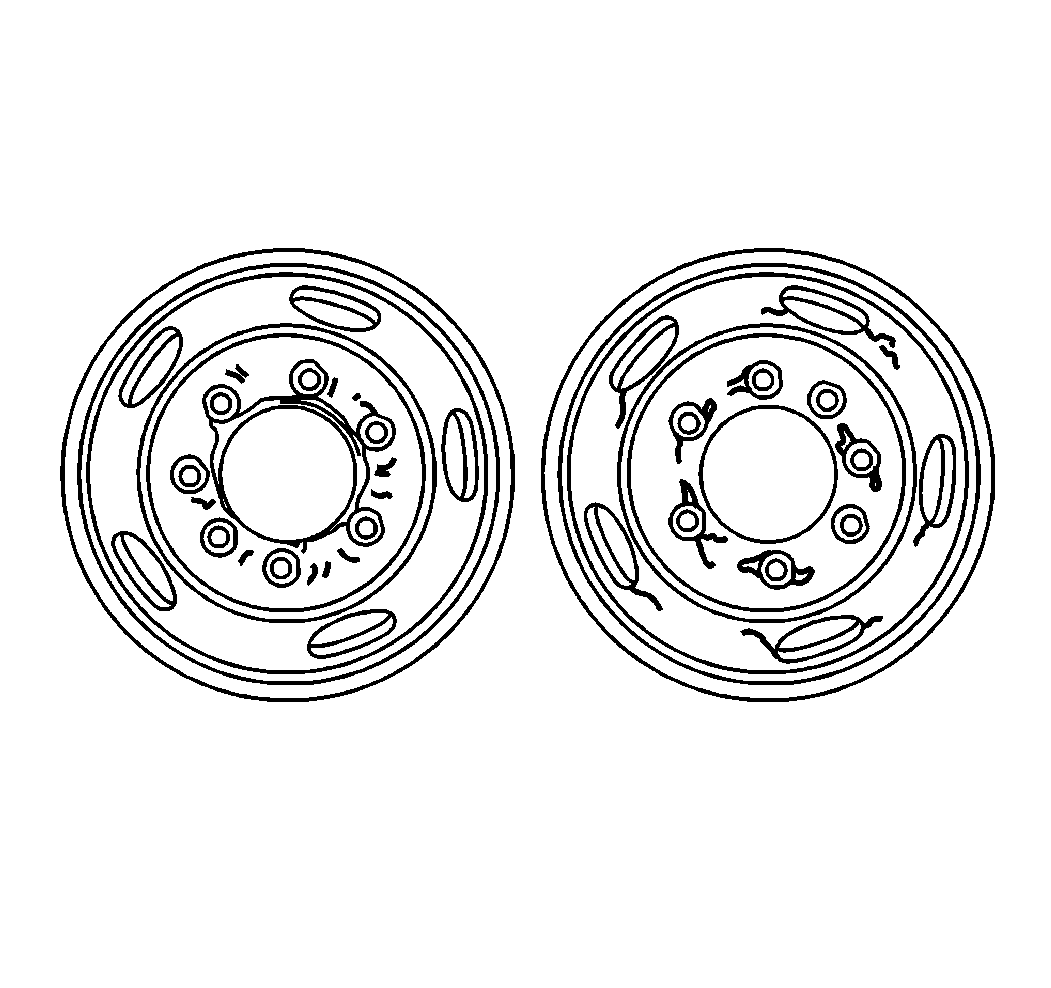
| • | Worn stud holes and cracked discs on stud-piloted wheels |
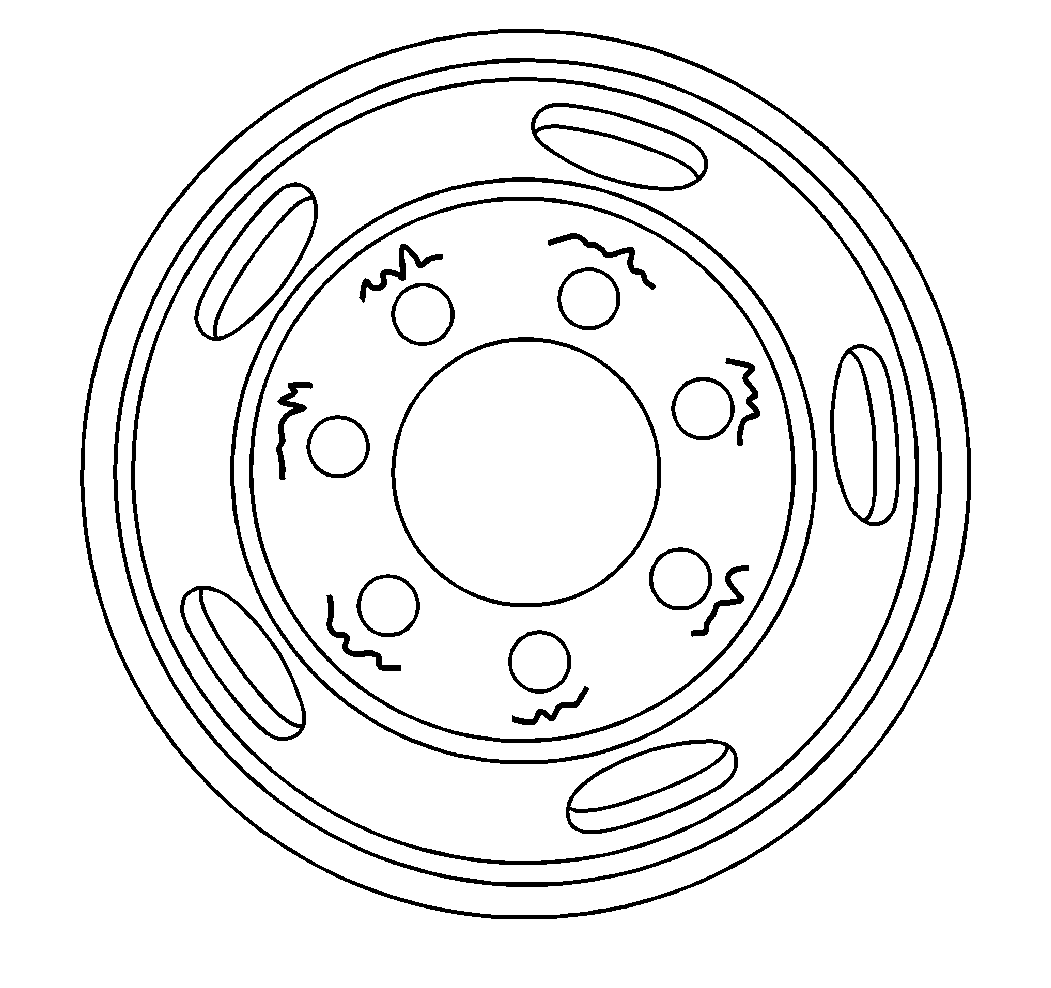
| • | Worn stud holes and cracked discs on hub-piloted wheels |

Carefully inspect the rims before mounting the tires. Replace all cracked
rims, which are dangerous to use.
The following is a list of common leak areas:
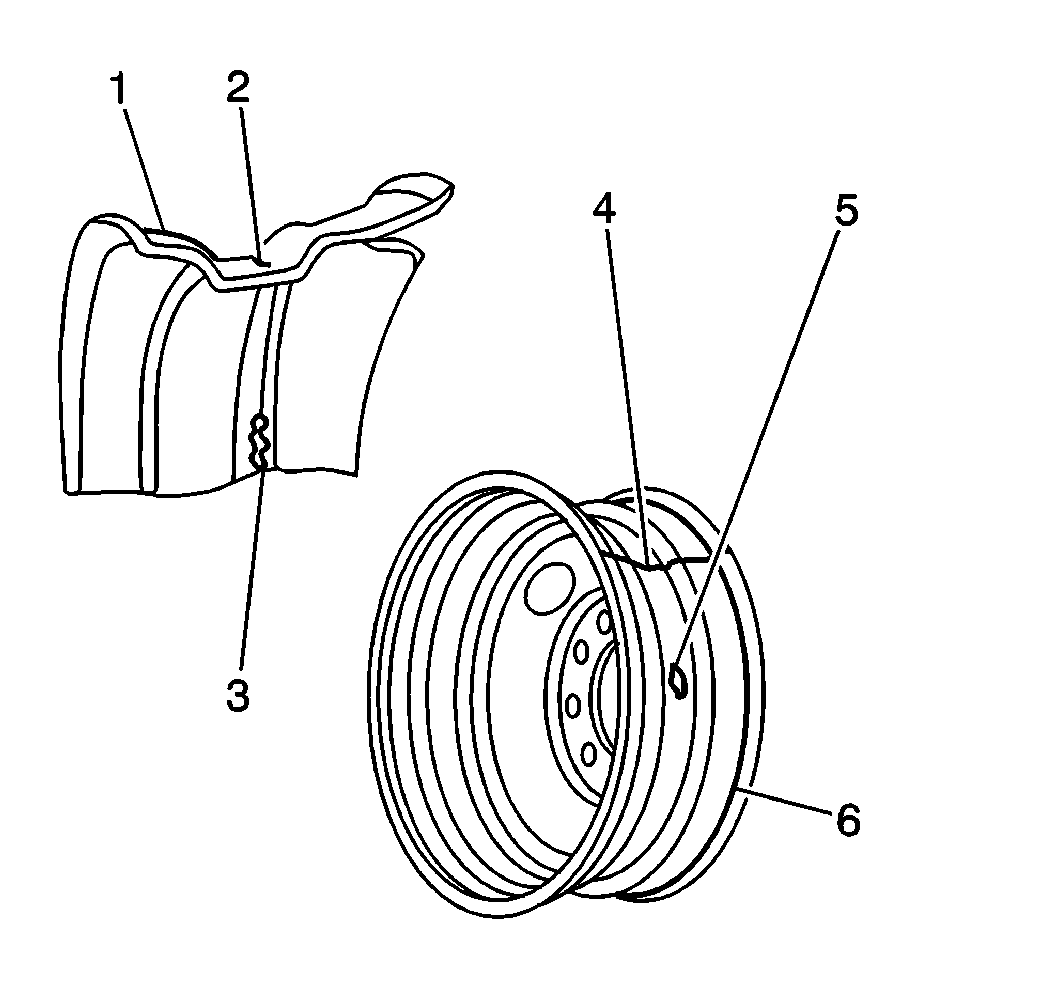
| • | Circumferential cracks at the bead seat (1) |
| • | Circumferential cracks in the well radius (2) |
| • | Circumferential cracks at the attachment weld (3) |
| • | A leak at the butt weld (4) |
| • | A leak at the valve hole (5) |
| • | A leak under the tire bead (6) |
Inspect the wheel for damaged bead seats. Excessive corrosion and improper
bead seating can cause erosion and chipping of the bead seat.
Inspect for a loose mounting condition. Loose mountings can cause damage
to the following components:
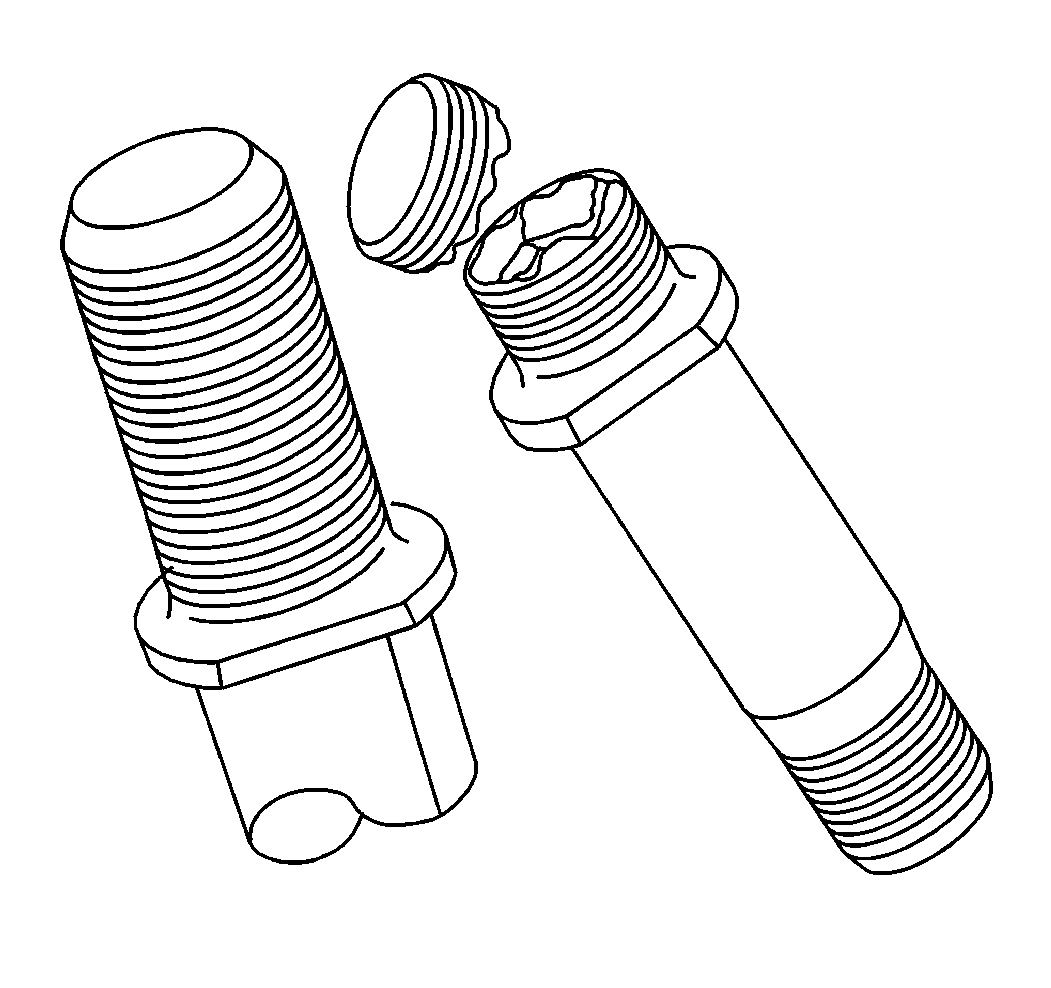
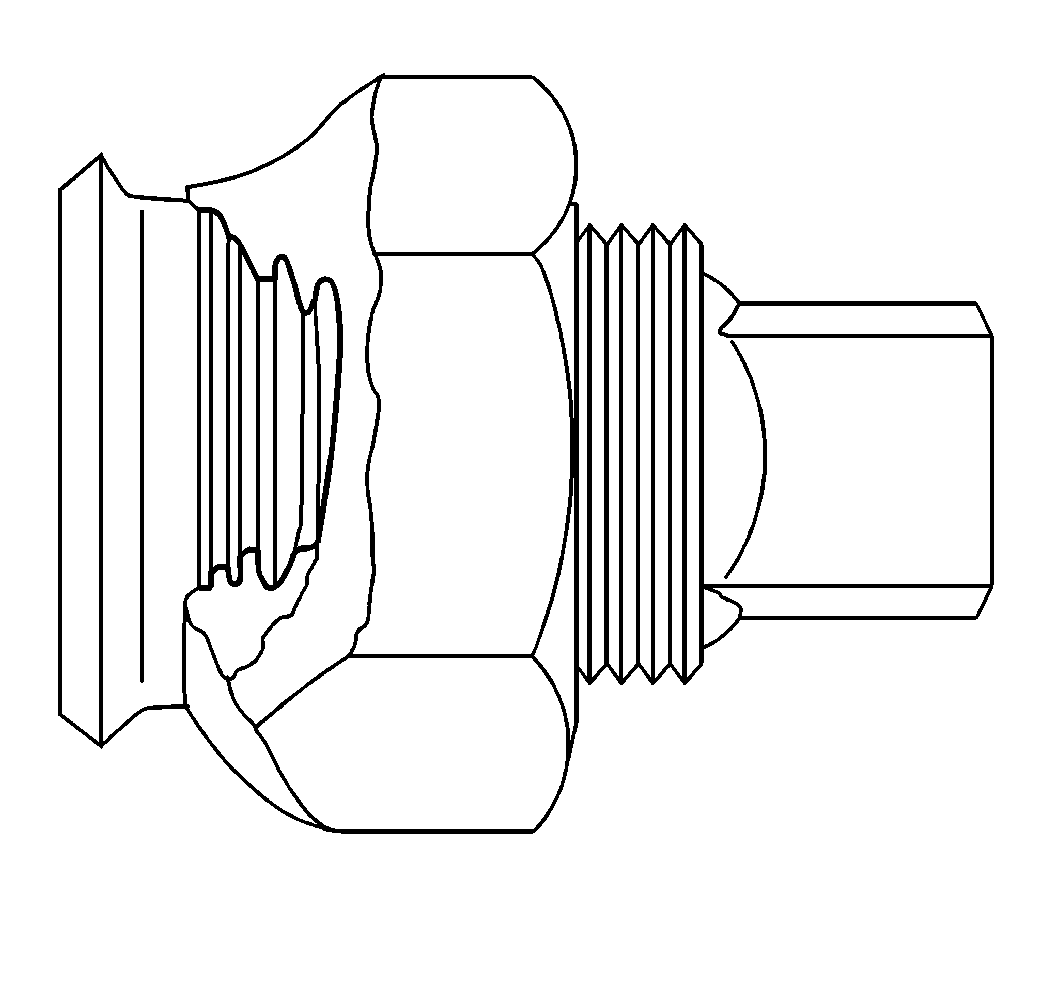
If a stud nut is damaged, replace all studs and wheel nuts. If the wheel
stud holes are damaged, replace the wheel.
Important: Corroded rims cause poor lock-ring or lock-ring seating. Replace all
corroded rims.
Inspect rings for a bent or sprung condition. Rough and improper removal
and installation procedures will cause bent or sprung rings. Rings which are
bent or sprung cannot be seated properly in the rim gutter. Replace springs
which are damaged, sprung, or bent.
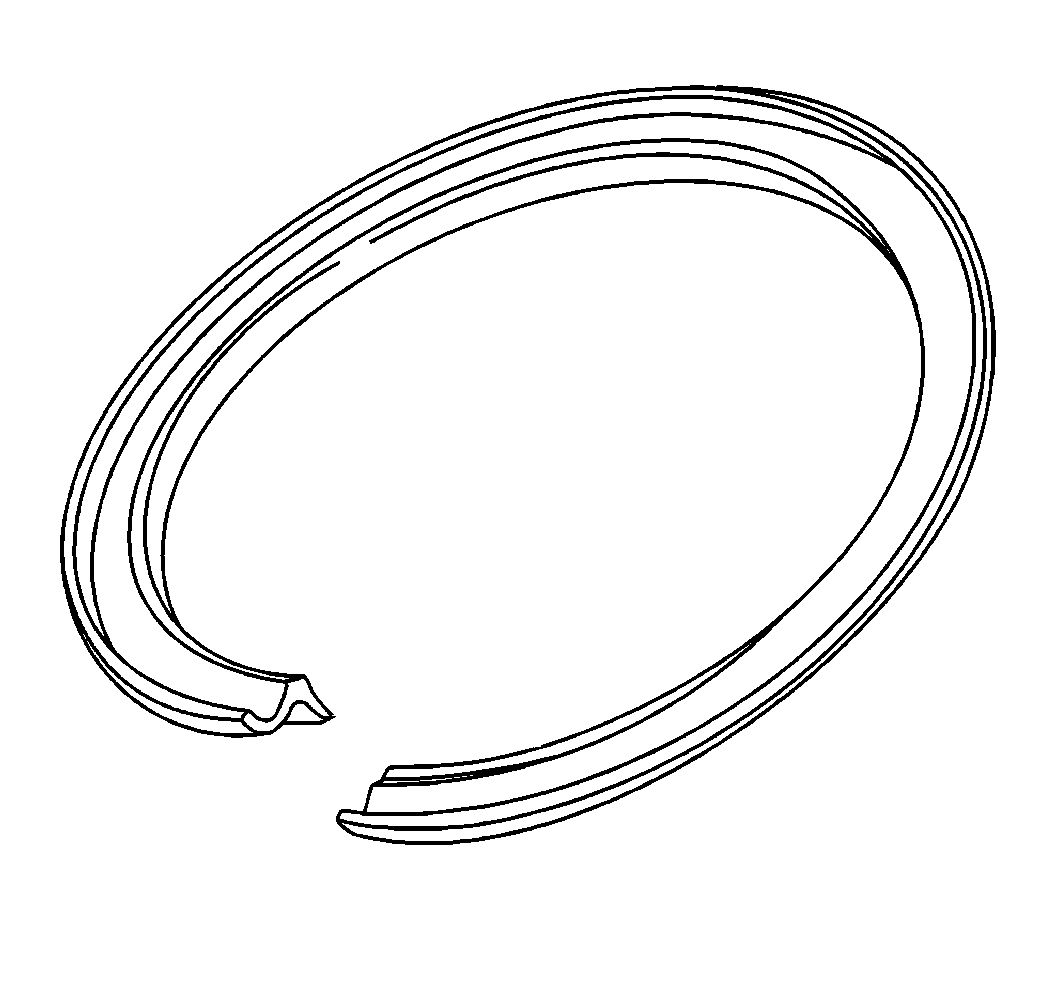
Inspect lock-rings for cracks or erosion. Lock-ring cracks spread laterally
through the entire ring. Improper removal and installation procedures will
cause cracking. Overloading, excessive clamping torque, and impact with
road obstructions can also cause cracked lock-rings.
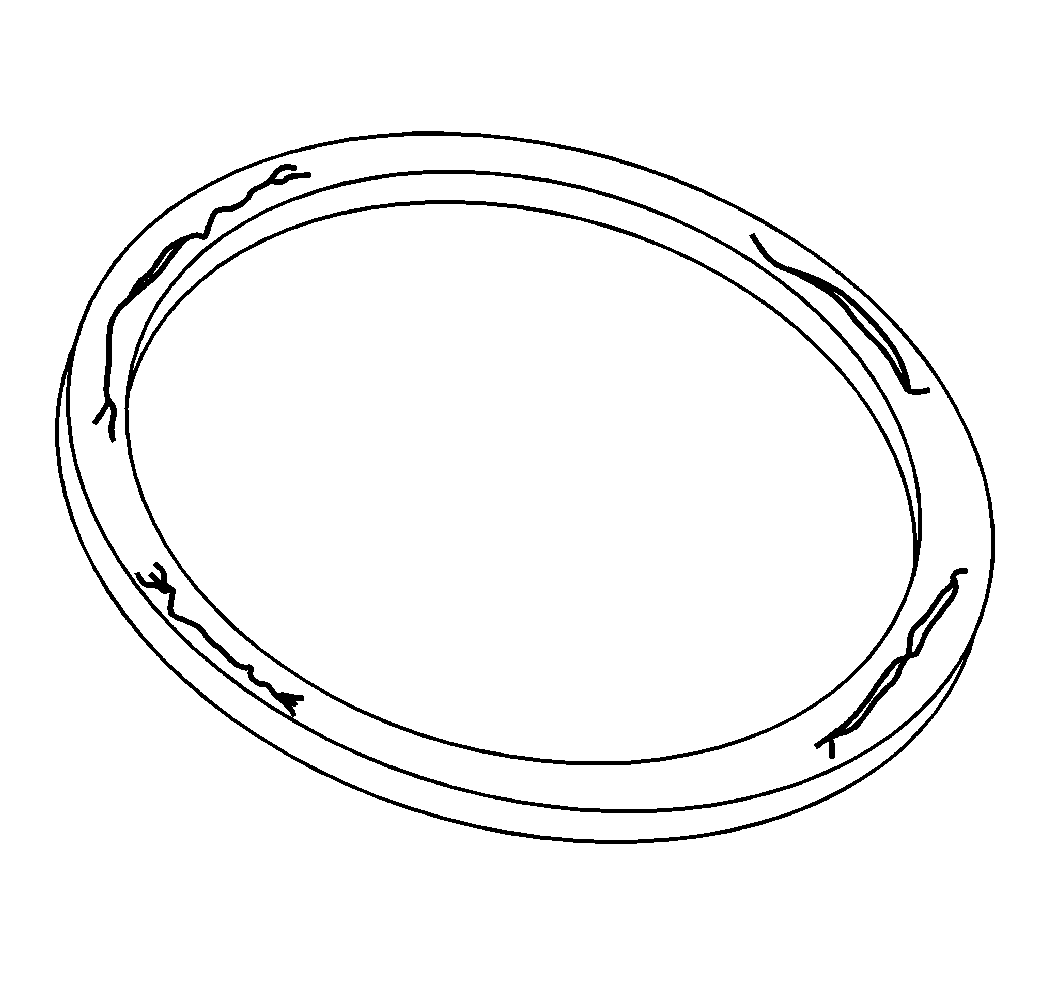
Inspect for damaged bead seats. Excessive corrosion and improper bead
seating can cause erosion and chipping of the bead seat. Replace damaged,
corroded, or bent lock-rings. Always use the proper type and size of lock-ring.
Wheel Stud and Nut Check
Wheel Studs
CAUTION:: If one stud is damaged, replace all the studs. A loose-running wheel
may cause only one stud to break, but the other studs could have internal
fatigue. Replacing only the broken stud and remounting the wheel may cause
further damage and personal injury. If the stud holes in the wheels have become
enlarged or distorted, replace the wheel.
Notice: Insufficient wheel stud nut torque can cause the rim to slip, resulting
in broken valve stems, worn parts, wheel shimmy, and extreme tread wear. Excessive
mounting torque can cause stripped or broken studs, collapsed spacer bands,
out of round rims, or cracks in the stud hole area.
Stripped threads on the studs can be caused by the following
conditions:
| • | Over-torquing the wheel nuts |
| • | Stud damage which occurred during wheel installation |
If any studs show damaged threads, replace all studs.
Broken studs may be caused by the following conditions:
| • | Operating with loose wheel nuts |
| • | Over-torqued wheel nuts |
| • | Improperly seated wheels |
Wheel Nuts
Notice: Insufficient wheel stud nut torque can cause the rim to slip, resulting
in broken valve stems, worn parts, wheel shimmy, and extreme tread wear. Excessive
mounting torque can cause stripped or broken studs, collapsed spacer bands,
out of round rims, or cracks in the stud hole area.
A loose mounting condition causes damaged wheel nuts. Replace
all of the wheel nuts and wheel studs if any are damaged.








